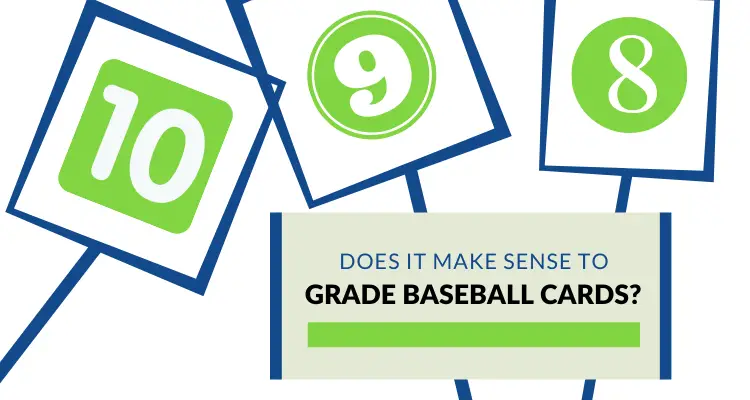 Ryan Barone (@ballcardgenius on TikTok, Card Expert) is a lifelong member of the hobby. He has been quoted in PSA Magazine, and his content has regularly been mentioned in “Quick Rips” (the Topps RIPPED Newsletter) and across other hobby publications. Join his 8,600 followers on TikTok! hello@ballcardgenius.com; Last Time Ago LLC dba Ballcard Genius.
Ryan Barone (@ballcardgenius on TikTok, Card Expert) is a lifelong member of the hobby. He has been quoted in PSA Magazine, and his content has regularly been mentioned in “Quick Rips” (the Topps RIPPED Newsletter) and across other hobby publications. Join his 8,600 followers on TikTok! hello@ballcardgenius.com; Last Time Ago LLC dba Ballcard Genius.
Affiliate Disclosure: This post contains affiliate links. As I am a part of the eBay Partner Network and other programs, if you follow these links and make a purchase, I’ll receive commission. As an Amazon Associate, I earn from qualifying purchases.
As a leader in authenticating sports cards and other items, PSA has the daunting task of striving for perfection every single day. I mean, when the specific grade of an item can drastically impact its value, the process of grading becomes all the more important.
One great tool is PSA’s PSA Photograde™ Online where you can easily compare graded cards against each other, and we are going to use it to compare PSA grading examples.
To start, below we have what is a PSA 10 1952 Mickey Mantle looks like (one of the most expensive trading cards ever)…
PSA 10 Example
According to PSA, a PSA 10 card will have, “four perfectly sharp corners, sharp focus, and full original gloss”. This means that the card is virtually flawless with little to no imperfections.

Why is a 10 so valuable? A raw trading card is one that comes directly out of a pack and has not been authenticated or graded, and barely handles.
Thus, some raw trading cards can come straight out of a pack and be listed for a good chunk of money. That said, a trading card that might go for $500 USD directly out of the pack, but could wind up selling for $5,000 USD if it is graded and authenticated by PSA as a Gem Mint 10’
PSA 9 Example
The next tier down for a PSA trading card that has been graded and authenticated is classified as a Mint 9. A Mint 9, as defined by PSA, is a card that is in “superb condition” and has only one minor flaw. This flaw can be a range of things, but most commonly PSA will grade a card a Mint 9 if there is simply a “minor printing imperfection”.
Read More: Guide to Baseball Card Conditions
Here is an example of that same Mickey Mantle, but as a 9 instead of a 10:

As previously stated above, the value of a trading card graded a Mint 9 by PSA can be significantly less desirable than one that is graded in a PSA Gem Mint 10. Does that mean a PSA 9 isn’t any good? Not necessarily…it really depends on the population.
PSA 8 Example
The third highest grade that PSA will give out is a Near-Mint 8, or NM-MT 8 which is what appears on the graded and authenticated card label. A Near-Mint 8 will look very similar to a Mint 9, but upon further examination, the item might display two slightly frayed corners instead of just one that you would see on a PSA Mint 9.

A PSA Near-Mint 8 does not draw a whole lot of attention in the modern era, as the value of these graded cards compare similarly to cards that are raw and unauthenticated, perhaps less.
Read More: How to Tell if a Card is Worth Grading
However, a PSA Near-Mint 8 can still be an extremely valuable card in cases of vintage and of course, antique baseball cards. Trading cards that were produced in the mid-to-late 20th century are more acceptable to flaws and errors.
Other PSA Examples
As the grade number gets lower, the flaws on the trading card become more and more noticeable. PSA Near-Mint 7, Excellent-Mint 6, and Excellent 5 graded trading cards display poor focus, printing issues, chipping on the edges, surface scratches, and rounded corners. The value of trading cards is all determined by what the actual trading card is, but vintage cards that land in this specific PSA grading range can still hold plenty of value because of how difficult it can be to obtain a flawless card from this era.

No matter the grade, having a trading card authenticated is imperative in today’s day and age if the consumer wants to get the most out of their item. By authenticating your item through PSA, there will be no doubt as to what the value is of the item, which is why millions of people continue to grade with PSA each and every day.
PSA Very Good-Excellent 4 graded cards is where the market shifts almost entirely to vintage era trading cards. It is very difficult to find any modern era trading card in a PSA VG-EX 4 grade due to the machinery and quality control of today’s trading card manufacturers.

The final three grades that PSA offers are as follows: Very Good 3 (VG 3), Good 2, Fair 1.5 (FR 1.5), and Poor 1 (PR 1).



